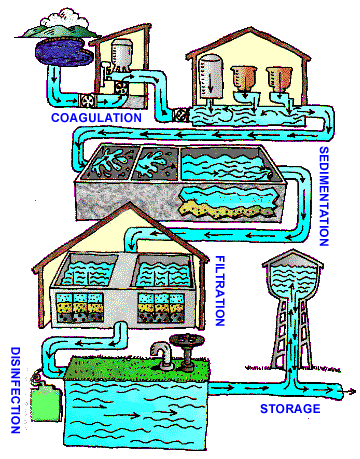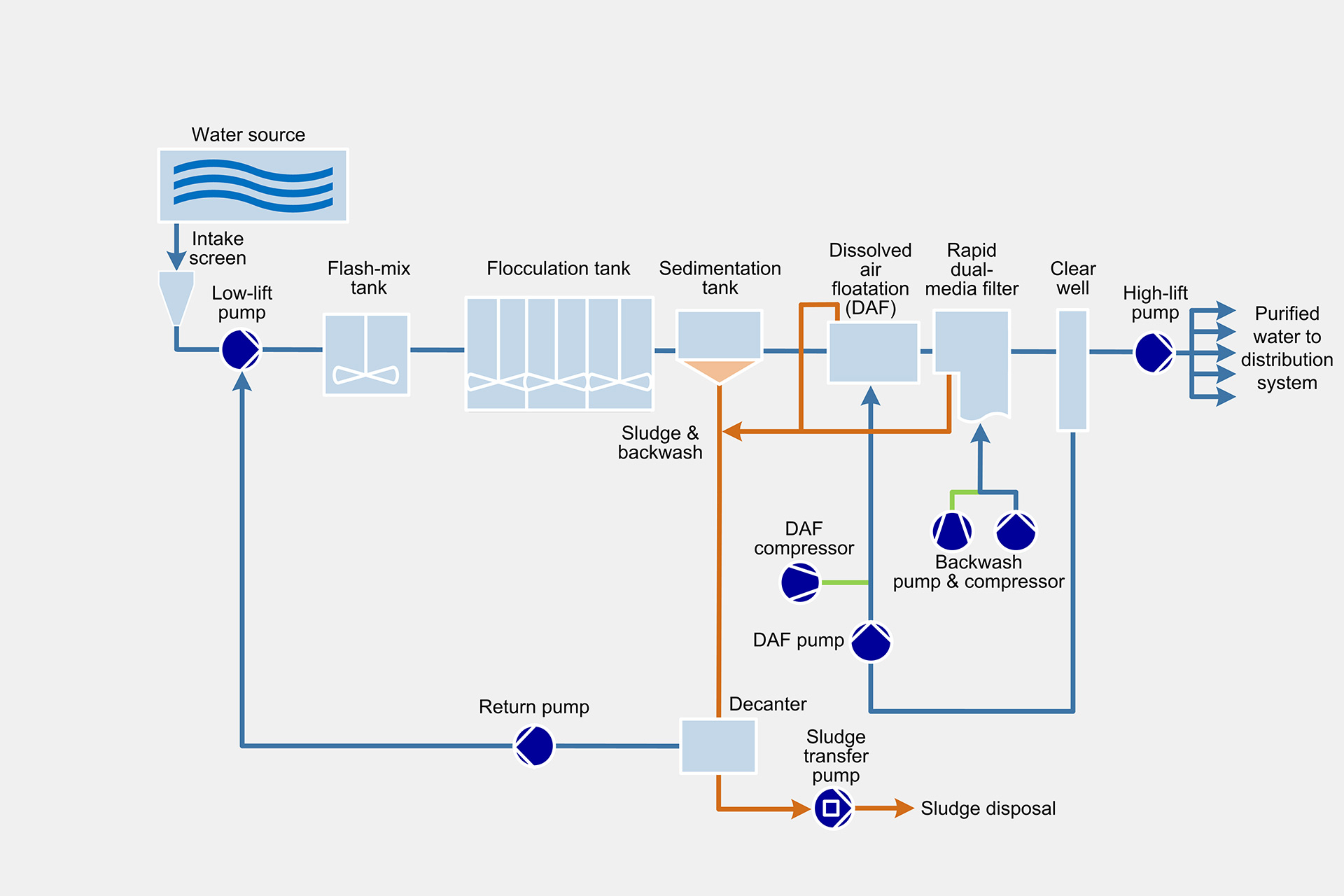The Best Strategy To Use For Best Water Filtration For Well Water
Table of ContentsBest Water Filtration For Well Water Can Be Fun For EveryoneThe Buzz on Best Water Filtration For Well WaterThe Basic Principles Of Best Water Filtration For Well Water Indicators on Best Water Filtration For Well Water You Should Know
Right here the water is delicately stirred by paddles in a flocculation basin (Number 5. 5) and also the flocs come into contact with each various other to form larger flocs. The flocculation container typically has a number of compartments with lowering blending speeds as the water breakthroughs via the basin (Figure 5.6(b)) for a number of hrs for sedimentation to happen. The material accumulated at the end of the container is called sludge; this is gotten rid of for disposal. 5.2. 5 Purification, Filtering is the process where solids are separated from a liquid. In water treatment, the solids that are not separated out in the sedimentation container are removed by passing the water via beds of sand as well as crushed rock.
6 Chlorination, After sedimentation, the water is sanitized to remove any type of staying pathogenic micro-organisms. The most typically used anti-bacterial (the chemical used for sanitation) is chlorine, in the type of a fluid (such as sodium hypochlorite, Na, OCl) or a gas.
The quantity of chlorine left after this is called recurring chlorine. This remains in the water completely with the distribution system, shielding it from any type of micro-organisms that might enter it, till the water reaches the customers. World Health Company Standards (WHO, 2003) recommend an optimum residual chlorine of 5 mg l1 of water.
The 10-Second Trick For Best Water Filtration For Well Water
5 mg l1 of water after thirty minutes' contact time (THAT, n. d.) - best water filtration for well water. There are other means of sanitizing water (e. g. by utilizing the gas ozone, or ultraviolet radiation) but these do not shield it from microbial contamination after it has left the water therapy plant. Complying with sanitation the cured water is pumped right into the distribution system.
7 Additional treatment, Auxiliary therapy might sometimes be needed for the benefit of the population. One such instance is the fluoridation of water, where fluoride is added to water (best water filtration for well water). It has been stated by the World Health Organization that 'fluoridation of water supplies, where possible, is the most effective public health measure for the prevention of oral degeneration' (THAT, 2001).
On the other hand, as you discovered in Research study Session 2, in the Rift Valley of Ethiopia, the water sources contain a higher concentration of fluoride than is desirable. Tekle-Haimanot et al. (1995) discovered that the level of fluoride in drinking water from deep wells there ranged from 1. 5 to 36 mg l1.
5 mg l1. What does excess fluoride in the water result in? As discussed in Study Session 2, in children it can create bespeckling of teeth and also extended exposure can cause skeletal fluorosis and crippling. In such high-fluoride areas, removal or decrease of fluoride (labelled defluoridation) is necessary. The simplest way of doing this is to mix the high-fluoride water with water that has no (or extremely little) fluoride to ensure that the final mixture is secure.
Facts About Best Water Filtration For Well Water Uncovered

In the latter it is contributed to the incoming sewage, where it can assist settlement of solids. The backwash from the sand filter is discharged right into the sewage system or gone back to the river after negotiation of solids. Packaging waste such as chemical drums can be returned to the provider for reuse.
5.4 Sustainability as well as durability in water treatment, In Research study Session 4 you check out about some variables that can influence the sustainability of a water resource - best water filtration for well water. As an example, reducing dirt erosion by planting trees and maintaining vegetation can lower the amount of silt that gathers in a tank and also extend its life.
Facility systems need to be prevented as well as any place feasible locally readily available products must be used. If a coagulant is called for, the one that can be bought in-country will certainly be preferable to one that has to be imported. Water therapy plants consume energy, and if this energy might be provided via eco-friendly sources (such as solar or wind) it will certainly keep operating expenses down and improve sustainability.
Facts About Best Water Filtration For Well Water Revealed
It can be difficult to acquire extra components, so there must be plans in position for purchase of replacements. (These as well as various other administration problems are the subject of the following research study session.) Another vital consider sustainability is an effective maintenance system, which needs planning and also, significantly, needs try this web-site well-trained and determined personnel.
With water therapy plants located really close to water sources, having excessive water can be simply as much a problem for procedures as having insufficient. Storms and floods, worsened by environment adjustment, might bewilder systems and also interrupt procedures, so ideal flood defence procedures need to remain in area. The need to be resistant to these influences is an additional factor why the equipment as well as building and construction of the plant ought to be of a high standard.
